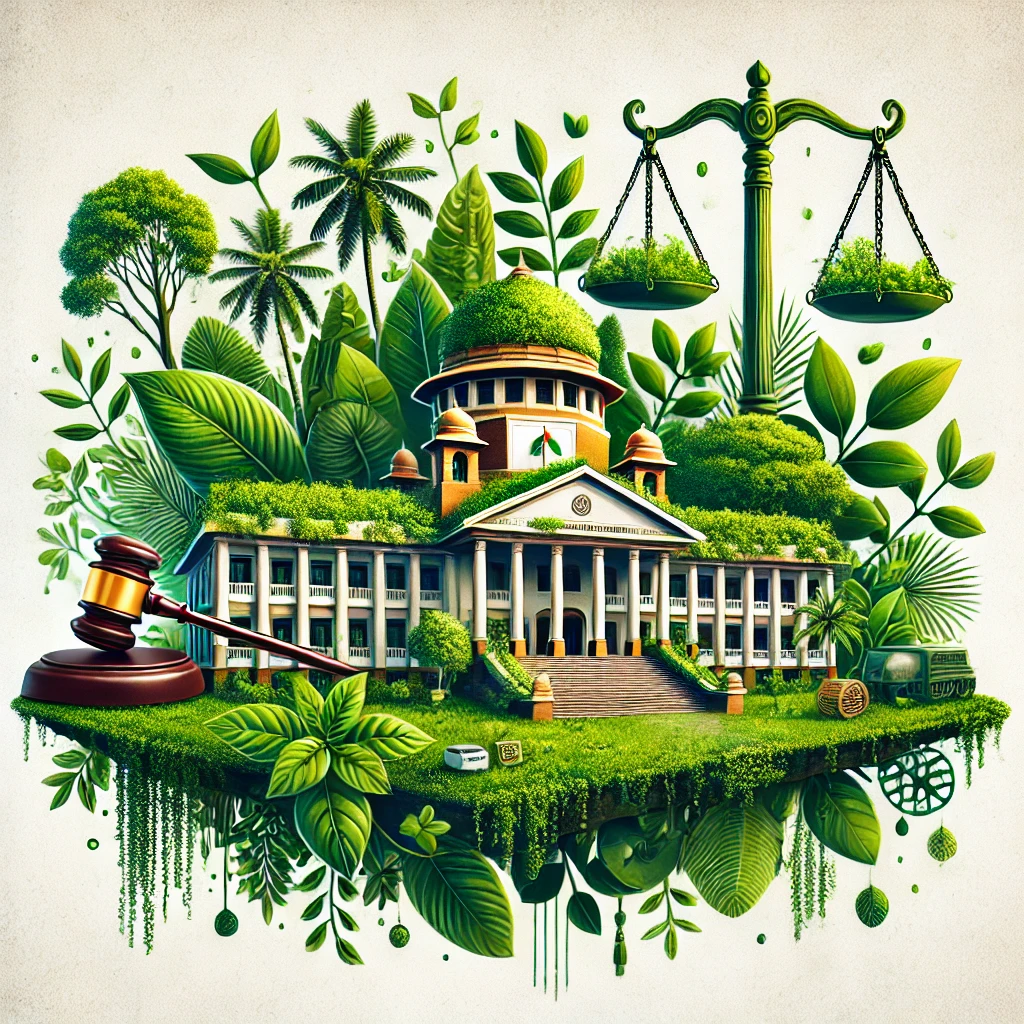Environmental laws at Iceland
Iceland, known for its unique landscapes and geothermal activity, places a significant emphasis on environmental protection. As a country that relies heavily on natural resources for its energy production (mainly geothermal and hydropower) and tourism industry, Iceland has developed a legal framework to ensure sustainable development, conservation, and the protection of its diverse ecosystems. The country's environmental laws are designed to balance economic growth with the preservation of its natural environment.
Here’s an overview of Iceland’s environmental laws and policies:
1. The Environmental Protection Act (2002)
Objective: The Environmental Protection Act serves as the main legislative instrument for environmental protection in Iceland. It provides a general framework for environmental policy and the protection of natural resources.
Key Features:
Environmental Quality: The Act establishes the principles for environmental protection, including safeguarding biodiversity, reducing pollution, and promoting the sustainable use of natural resources.
Environmental Impact Assessments (EIAs): It requires that projects likely to have significant impacts on the environment undergo an Environmental Impact Assessment (EIA). This includes infrastructure projects, mining, and large-scale energy projects.
Pollution Control: The Act includes provisions to prevent air, water, and soil pollution, aiming to preserve the high quality of Iceland’s natural resources.
Sustainable Use of Resources: The law emphasizes the importance of sustainable use of Iceland’s resources, including fisheries, geothermal energy, and hydropower, ensuring that they are managed responsibly for future generations.
2. The Nature Conservation Act (2015)
Objective: The Nature Conservation Act aims to protect Iceland's rich and diverse natural heritage, including its unique ecosystems, wildlife, and geological features.
Key Features:
Protected Areas: The law provides a framework for establishing and managing national parks, nature reserves, and protected areas. Iceland is home to several national parks, including Thingvellir National Park, which is a UNESCO World Heritage Site.
Biodiversity Conservation: The Act emphasizes the protection of biodiversity, ensuring that habitats for flora and fauna are preserved. It includes provisions for the protection of species and their habitats, such as seabirds, reindeer, and other native wildlife.
Conservation of Geological Features: The law also protects Iceland’s geological features, such as volcanoes, glaciers, hot springs, and geothermal fields, which are of both scientific and cultural significance.
Environmental Education: The Act promotes environmental education and public awareness, encouraging citizens and tourists to understand the importance of conserving Iceland’s natural heritage.
3. The Fisheries Management Act (1990)
Objective: The Fisheries Management Act governs the sustainable management of Iceland’s fishing resources. As a nation heavily reliant on fisheries, this law ensures the conservation of fish stocks and the sustainable operation of the fishing industry.
Key Features:
Fishing Quotas: The law establishes a quota system to regulate the amount of fish that can be caught each year, helping to prevent overfishing and ensure that fish populations remain healthy.
Sustainable Fishing Practices: It includes provisions to encourage sustainable fishing methods, limit bycatch, and protect vulnerable marine species.
Marine Protected Areas: The law allows for the designation of marine protected areas (MPAs) where fishing is restricted or prohibited to protect sensitive marine ecosystems and biodiversity.
Monitoring and Enforcement: The law provides mechanisms for monitoring and enforcing fishing activities, ensuring compliance with quotas and regulations to protect Iceland’s marine environment.
4. The Act on Geothermal Energy (2003)
Objective: Iceland is a global leader in utilizing geothermal energy, and the Geothermal Energy Act is the primary piece of legislation governing the exploration and utilization of geothermal resources in the country.
Key Features:
Resource Management: The Act regulates the use of geothermal energy, ensuring that the country’s geothermal resources are developed and used in a sustainable manner.
Environmental Protection: The law includes provisions to ensure that the extraction of geothermal energy does not harm the environment, including the protection of groundwater, geothermal fields, and surrounding ecosystems.
Research and Development: It encourages research and development in the field of geothermal energy, promoting technological innovation that improves the efficiency and sustainability of geothermal energy extraction.
5. The Waste Management Act (2002)
Objective: The Waste Management Act provides the legal framework for waste management in Iceland, focusing on reducing waste generation, encouraging recycling, and ensuring the proper disposal of waste to protect the environment.
Key Features:
Waste Minimization: The law promotes waste minimization strategies, including the reduction of waste generation at the source and the encouragement of recycling and composting.
Recycling Programs: Iceland has a robust recycling system, and the law mandates the sorting and recycling of household, industrial, and commercial waste. It sets targets for recycling and waste reduction.
Hazardous Waste: The law regulates the disposal and treatment of hazardous waste, including chemicals, medical waste, and electronic waste, ensuring that it is handled safely and responsibly.
Waste Disposal Sites: The law sets standards for waste disposal sites, including landfills, and promotes the use of environmentally friendly waste treatment methods, such as waste-to-energy systems.
6. The Pollution Control Act (2001)
Objective: The Pollution Control Act focuses on preventing pollution in Iceland, particularly air, water, and soil pollution, which could harm both the environment and public health.
Key Features:
Air Quality Standards: The law sets air quality standards and regulates emissions from industrial facilities, vehicles, and power plants, particularly to control pollutants like sulfur dioxide (SO₂), nitrogen oxides (NOx), and particulate matter.
Water Quality: The Act establishes water quality standards to protect Iceland’s freshwater resources, including rivers, lakes, and groundwater. It regulates wastewater discharges and ensures that water bodies remain clean and safe for consumption and recreation.
Soil Protection: It includes measures to prevent soil contamination from industrial activities, chemicals, and improper waste disposal.
Pollution Prevention: The Act requires industries and businesses to adopt pollution prevention measures and to reduce their environmental impact through cleaner technologies and practices.
7. The National Energy Policy (2008)
Objective: Iceland’s National Energy Policy focuses on the sustainable development of energy resources, particularly renewable energy, which is a key feature of the country’s energy system.
Key Features:
Renewable Energy: Iceland's energy policy emphasizes the use of renewable energy sources, including geothermal, hydropower, and wind energy. Over 80% of Iceland’s energy consumption is derived from renewable sources, making it one of the most sustainable energy systems in the world.
Energy Efficiency: The policy encourages energy efficiency across all sectors of the economy, including the industrial, residential, and transportation sectors, to reduce energy consumption and greenhouse gas emissions.
Sustainable Energy Development: It promotes the responsible development of energy resources, ensuring that environmental impacts are minimized, particularly in sensitive areas such as geothermal fields and hydropower dams.
8. The Climate Change Act (2019)
Objective: The Climate Change Act sets out Iceland’s framework for addressing climate change through mitigation and adaptation measures. The country is committed to reducing its greenhouse gas emissions and strengthening resilience to climate change impacts.
Key Features:
Carbon Neutrality: The Act commits Iceland to becoming carbon neutral by 2040, with interim goals for reducing emissions by 40% by 2030.
Adaptation Measures: It includes provisions for adapting to the impacts of climate change, such as rising sea levels, changes in temperature, and more extreme weather events.
Monitoring and Reporting: The Act establishes mechanisms for monitoring and reporting on climate change mitigation and adaptation progress, ensuring that Iceland meets its climate targets.
9. The Act on Public Access to Information (1999)
Objective: The Act on Public Access to Information ensures transparency in the decision-making process related to environmental matters and promotes public participation in environmental policy and planning.
Key Features:
Public Participation: The law grants citizens the right to access information about environmental matters, such as proposed development projects, environmental assessments, and policy decisions.
Environmental Decision-Making: It ensures that environmental information is made available to the public and that citizens can participate in consultations and decision-making processes related to environmental policies and projects.
10. The Icelandic Environmental Agency (Umhverfisstofnun)
Role and Function: The Icelandic Environmental Agency is the primary governmental body responsible for implementing and enforcing environmental laws and policies in Iceland. It monitors environmental quality, conducts environmental assessments, and ensures compliance with environmental regulations.
Key Responsibilities:
Monitoring and Enforcement: The Agency oversees compliance with environmental laws, including pollution control, waste management, and resource management, and enforces regulations through inspections and sanctions.
Environmental Policy Development: It plays a key role in developing and implementing national environmental policies, including those related to climate change, energy, and biodiversity.
Challenges and Opportunities
Sustainable Tourism: Iceland’s tourism industry is rapidly growing, which presents both opportunities and challenges. The country is working to develop sustainable tourism practices that minimize environmental impact while ensuring that tourists can enjoy Iceland’s natural wonders responsibly.
Climate Change and Renewable Energy: While Iceland has a renewable energy-based economy, climate change still poses risks, including the melting of glaciers, which affects water resources and tourism. Adapting to these changes is a key concern for the government.
Biodiversity Conservation: Although Iceland’s biodiversity is relatively stable, conservation efforts are ongoing to protect species and ecosystems that may be threatened by climate change or human activities.
Conclusion
Iceland has a robust set of environmental laws and policies designed to protect its unique natural environment while fostering sustainable development. These laws cover a wide range of areas, including pollution control, renewable energy, natural resource management, and climate change. The government’s commitment to sustainability, particularly through the use of renewable energy, is a key feature of Iceland's environmental strategy. However, challenges remain in ensuring the long-term protection of its natural resources amidst growing tourism and climate change pressures. The effective enforcement of these laws, along with public participation and international cooperation, will be crucial in achieving Iceland’s environmental goals.




























0 comments